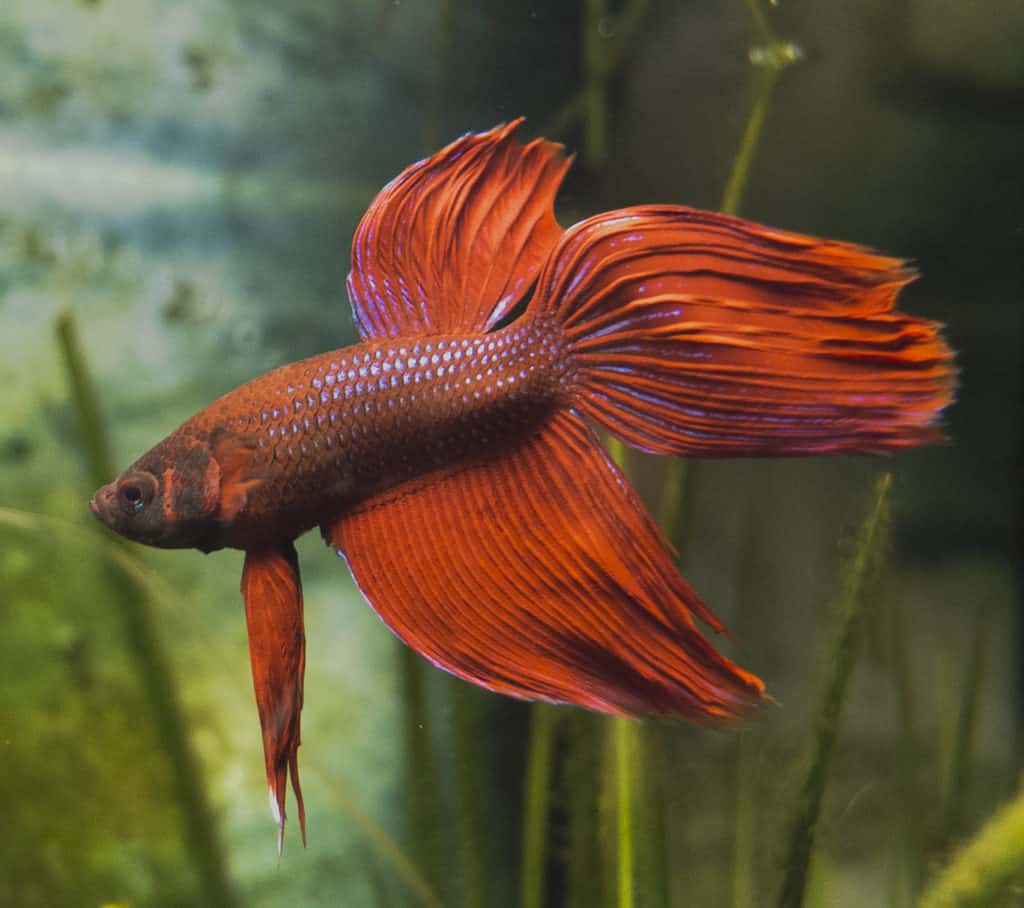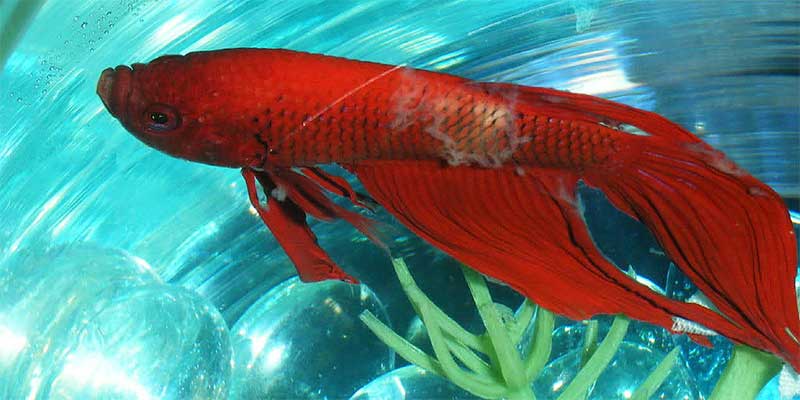Step 2: Toss Your Ancient Betta Food and Feed them Appropriately
Betta food containers are WAY too big for all bettas. Never once have we witnessed a betta truly consume a food container on time. You’ve lost a lot of the water-soluble vitamin content, mostly vitamin C, after six months of opening your betta food container every day. Thus, after six months, discard the container and get a new one, regardless of how much of the original has been consumed by your fish. Here is out favorite food for bettas.
Now, how much food should you give your betta? You should feed them twice a day after they are all nice and toasty in a heated tank. Give your betta enough pellets to fit inside one of their eyeballs, as the size of the pellets varies greatly. Here’s more details on feeding your betta correctly.

Betta Disease Pictures and Synopsis
While some betta diseases have more favorable prognoses, others may not be as treatable. Check your betta daily for anything abnormal. A betta’s feedings and tank cleanings are excellent times to check for typical signs of illness.
Discover the personality of your fish as well, so you can tell when they’re acting strangely quickly.
Columnaris (Cotton Wool or Mouth Fungus)

Your betta’s water contains both harmful (Columnaris) and beneficial bacteria. Under stressful habitat conditions (e. g. crammed) and dirty water, bacteria can get into the body through cuts, the mouth, or the gills. Columnaris will have noticeable, occasionally stringy cottony patches on its mouth, gills, or fins throughout its body. Accelerated symptoms may also include visible lesions and gill damage.
Numerous conditions, such as bacterial infections, parasites, poor nutrition, and viral diseases, can result in dropsy. Additionally, keepers who feed their betta live food frequently experience it.
Dropsy is actually not a disease, but rather the symptom of what’s going on inside the betta fish’s body from other ailments. These ailments include fluid build up and the swelling of failing organs (liver and kidney). Dropsy is severe and visible from above. You’ll notice extreme swelling in the abdominal area and outward flaring scales that resemble a pine cone. This is shown in the photo above and in the full video here.
The bacteria that caused the internal problems is communicable and can infect other people in the community tank. The inclination of betta fish to remain near the surface in order to readily obtain oxygen is another sign of dropsy. Their appetite will also be virtually non-existent.
The most prevalent illness affecting betta fish is most likely fin rot or tail rot (melt). It’s frequently mistaken for bored tail biting and tears on sharp tank decor.
Upon examination, the disease will be visibly evident in the caudal tail or other fins. If left untreated, these symptoms can result in body rot and include red or black tattered, occasionally bloody, edges along the affected areas.
Conventional conduct and disposition typically do not alter unless the betta also has additional medical conditions. To respond to your second query, the answer is that they can regrow new fins!
FAQ
How do I make my betta fish healthy?